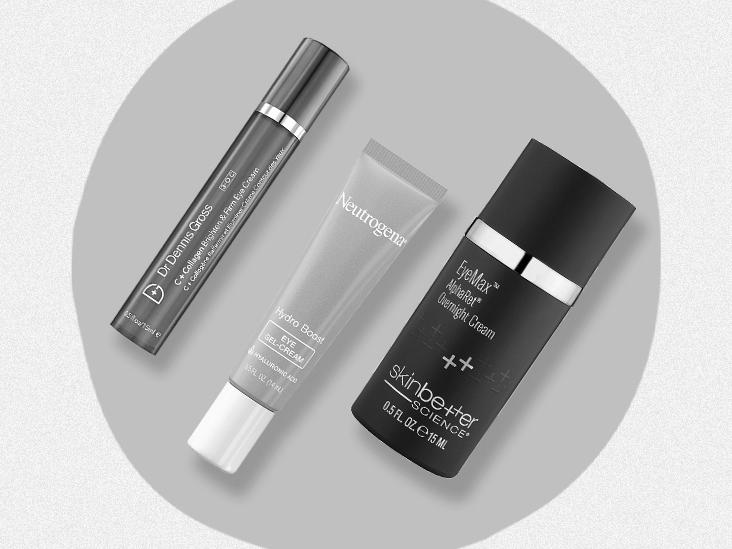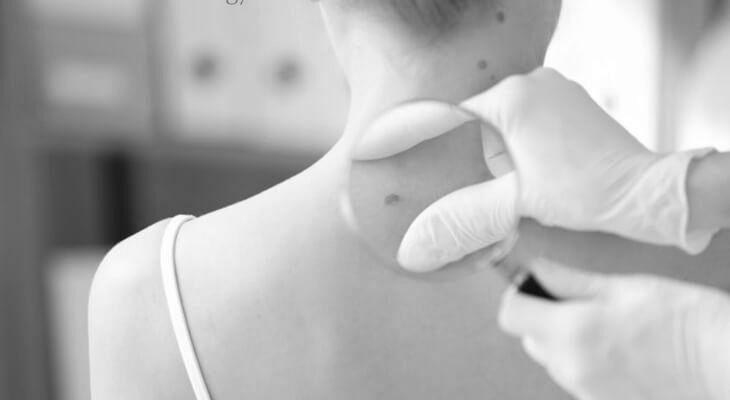Is it a Good Idea to Go to the Dermatologist?

If you’ve got a skin problem, whether acne or psoriasis, you may be wondering, “Is it a good idea to go to the dermatologist?” In some cases, it’s because you don’t think you have a serious issue, or you want to ignore it and see if it will go away on its own. However, if this is the case, you are in for a surprise.
Treatment of psoriasis

A dermatologist may prescribe PUVA treatment if other medications do not work for your psoriasis. This therapy combines psoralen medication with UVA light therapy. Psoralen makes the skin more receptive to UVA light and may be used in combination with other treatments. PUVA is effective in about 85% of cases. However, if you are experiencing severe flare-ups, your Dermatologist may prescribe corticosteroids.
Psoriasis can cause significant physical and psychological disabilities. Patients with a little plaque of psoriasis may be at risk for psychological disorders and may benefit from psychotherapy. Some patients may also benefit from topical retinoids or vitamin D analogs. In some cases, a dermatologist may prescribe anthralin for thick patches. Newer anthralin formulations have minimized the risk of adverse reactions in patients.
Choosing the suitable treatment options for psoriasis can be challenging. Treatment options may vary depending on psoriasis and the patient’s tolerance. A common goal for treatment is to reduce the appearance of the lesions to the point where they do not affect daily life. While no cure exists, treatment with the help of a dermatologist can help you get on the road to recovery.
A dermatologist will recommend oral therapy if calcipotriol cream or ointment does not work. In addition, calcipotriol may be prescribed with a prescription.
Treatment of eczema

Eczema is a common skin condition that can significantly impact a person’s quality of life. It may prevent a person from sleeping or distract them at work, or make them feel self-conscious in public. There are several methods for treating the symptoms of eczema, including over-the-counter medications and home remedies. The condition may even lead to a skin infection in some severe cases. Painful red bumps containing pus may be signs of disease.
While there are several methods for treating eczema, dermatologists are experts in creating individualized treatment plans based on the patient’s individual needs and preferences, such as eliminating potential triggers and avoiding certain fabrics that exacerbate the condition. In addition to topical medications, dermatologists may prescribe ultraviolet light therapy to reduce the itchiness and inflammation of eczema. This treatment may be effective for milder cases but is associated with an increased risk of sunburn and skin cancer.
In addition to topical creams, a dermatologist can prescribe oral medications to treat eczema. These medications may include steroids, antihistamines, anti-inflammatories, the severity of the symptoms, and the infection’s cause. These medications may take weeks or even months to work, so you should talk to your Dermatologist before taking them.
There are a few different types of topical corticosteroids available. Some may be over-the-counter, while others are prescription only. Corticosteroids may be an option for some mild cases, but it is best to consult a dermatologist for moderate-to-severe patients. There are also different levels of strength available, so a dermatologist will be able to prescribe the appropriate dosage for the patient.
Treatment of melanoma

A dermatologist can help you determine the stage of your melanoma. Early-stage melanomas are localized and have no signs of spread. Treatment consists of the removal of the affected part of the skin. This procedure typically leaves only a tiny scar.
This biopsy helps diagnose the condition and ensure it’s not something else.
In addition to removing the melanoma itself, a doctor may suggest additional surgeries. A sentinel lymph node biopsy is an option if cancer has spread to nearby lymph nodes. It may also be necessary to remove nearby lymph nodes, called a complete lymphadenectomy. Patients with stage 1B to stage 2C melanoma may be recommended to undergo a sentinel lymph node biopsy if they believe their disease has spread to other lymph nodes.
After surgery, the patient is usually offered follow-up care plans, including regular physical exams, medical tests, and dermatologic examinations. Follow-up care plans are designed based on a patient’s risk of recurrence. They have a medical history and a melanoma surveillance form. This information will be helpful if you are undergoing a chemotherapy regimen. In addition, your family can support you and help you cope with the condition.
Treatment of acne

If your acne hasn’t responded to home remedies or over-the-counter treatments, you may need to see a dermatologist. Early treatment is crucial to prevent acne from forming scars or lasting damage to your self-esteem. Acne treatments can range from prescription or over-the-counter medications to vitamins and supplements. Below are some tips to help you make the most of your Dermatologist’s services.
Topical acne treatments can help minimize oil production and reduce bacteria on the skin. Some medications kill bacteria that cause inflammation, and retinoid helps your skin shed dead cells. Orally. They will help the acne improve gradually, but they require consistency. Hormonal therapies can be used to control acne triggered by the menstrual cycle. While these treatments may take several months to work, they’re effective for some types of acne.
First-line acne treatment for mild to moderate acne vulgaris typically involves topical retinoids and benzoyl peroxide. Oral antibiotics, such as doxycycline and minocycline, are also effective. For more severe cases of acne, the treatment may involve an oral antibiotic or an oral contraceptive. Neither of these options is recommended for use as monotherapy. However, antibiotics can effectively treat severe acne, but they have side effects.
If your acne is mild and not responding to over-the-counter products, your general health care provider may prescribe a topical treatment. However, if you have more severe acne, you may need to visit a dermatologist. A dermatologist can recommend prescription-strength products for you. They’ll prescribe a treatment plan tailored to your needs. You can also try topical retinoids like Differin (R) or benzoyl peroxide. Make sure to follow instructions carefully. And permanently remove makeup at the end of the day.
Treatment of warts

There are several options for treating warts, including surgical procedures. If you have warts, you may be at risk of contracting HIV, which weakens the immune system and makes it more susceptible to the virus that causes warts. If you suspect that you have been exposed to warts, visit a dermatologist.
Salicylic acid, found in over-the-counter products, can be applied to warts. Higher concentrations of salicylic acid may be more effective. You should use the treatment on the affected area twice a day for several weeks, but stop the treatment if warts become sore. Occlusive treatment, which uses duct tape to close the wart, may also help.
Another treatment option is freezing the wart. A dermatologist will use liquid nitrogen to freeze off the wart. This treatment is effective for smaller warts, but it is not as cold as the freezing method used in a doctor’s office. You should apply the freeze spray for several seconds before removing it. You may develop a blister near the wart, but it will heal within a few days.
A dermatologist may recommend the topical application of a medication called Imiquimod. This medication boosts the immune system and kills the wart cells. This topical treatment is available only on prescription and is applied by the patient. A more serious option is 5-Fluorouracil, a chemotherapeutic agent for warts and pre-cancers in the skin. It is a prescription-only medication that is applied to the affected area.
Can We Become a Plastic Surgeon After an MD in Dermatology?

A doctorate in dermatology does not automatically mean you can become a plastic surgeon. This career requires a unique combination of training and expertise. Typically, plastic surgery takes five to six hours to complete. A surgeon must stay focused and avoid making any fatal mistakes during that time. In addition, the job requires intense concentration, so it’s not the best career option for people who are rushed or have poor attention spans.
- Parker’s training
After graduating from the George Washington University School of Medicine, Dr. Parker completed his training in plastic surgery. He received a Phi Beta Kappa from Union College and went on to earn his MD at the George Washington University School of Medicine. Following his medical degree, Dr. Parker completed a five-year residency in general surgery at NYU Medical Center, where he earned his board certification in general surgery. Dr. Parker spent six months at the Manhattan Eye, Ear, and Throat Hospital during his training.
While completing his MD in dermatology, Dr. Parker also completed a fellowship in plastic surgery at a university in Philadelphia. A fellowship program requires a plastic surgeon to complete a series of surgical procedures and master specific medical tasks. In particular, Dr. Parker is known for his meticulous preoperative planning and minimally invasive surgical techniques. As a result, patients benefit from his procedures’ smooth and natural-looking results.
In addition to practicing general medicine, Dr. Parker has received training in aesthetic dermatology. He sees patients in Midtown and Lakeside, and he has mentored at-risk youth. Dr. Parker is a member of the American Academy of Physician Assistants and the Society of Dermatology Physician Assistants. He is excited to offer patients at Midwest Dermatology a high-quality dermatology experience.
He is also a member of numerous professional organizations and enjoys giving back to his hometown community through his dermatology practice.
In addition to his dermatology fellowship, Dr. Parker completed her undergraduate studies at Brown University. She then earned her medical degree from the University of North Dakota. After completing her residency at Southern Illinois University, she joined Affiliated Dermatologists in Morristown, New Jersey. In addition, she earned the prestigious Mohs Fellowship from the American College of Mohs Surgery. In this fellowship, she received advanced training in Mohs skin cancer surgery. She also underwent training in complex reconstructive surgery and pathology.
After completing her MD in dermatology, Dr. Parker began her plastic surgery training in 2001. Before attending a dermatology residency in Ann Arbor, Michigan, she then underwent an internship at the Midtown Medical Center in Columbus, Georgia. During his residency, he served as the chair of the cosmetic committee. She has been practicing dermatology for five years and has a passion for reading and spending time with her family.
In addition to her education, Dr. Parker has completed the most advanced fellowship training in cosmetic reconstruction after an MD in dermatology. He is board-certified in both fields and fellowship-trained in Mohs surgery and procedural dermatology. In addition, she continues to see patients at her Aurora dermatology practice. She has continued to see patients during her fellowship despite pursuing a plastic surgery career.
Requirements for becoming a board-certified plastic surgeon

A Board-certified plastic surgeon is an individual who has completed additional training in aesthetic surgery. Board certification is awarded by the American Board of Medical Specialties, an organization that sets exceptionally high standards for entry. After completing an MD, a plastic surgeon will undergo an additional three-year residency in cosmetic surgery. Despite the rigorous training required, this certification is well worth the extra time and money and makes it worthwhile to pursue.
To become a board-certified plastic surgeon, a physician must complete at least six years of post-medical school training, including a residency or fellowship. A plastic surgeon must also complete a comprehensive exam and submit personal surgical case lists. ABPS recognizes 24 boards, including Plastic and Reconstructive Surgery. A physician who meets these requirements will become a board-certified plastic surgeon.
To become a board-certified plastic surgeon, candidates should complete a fellowship in their field of interest. Fellows typically spend a year in training and must complete a research project. Allopathic plastic surgeons may also become board-certified cosmetic surgeons. There are other pathways to becoming a plastic surgeon after an MD dermatology. There are several paths to certification in this field, so it is essential to learn about the requirements and pursue a board-certified plastic surgeon after a medical degree.
As a plastic surgeon, you must earn a doctor of medicine (MD) or osteopathic medicine (DO) degree. Although many patients prefer MDs, DOs are still highly trained. The significant difference between MDs and DOs is their approach to treatment, which is taught in their respective medical schools. After graduation, both doctors must pass the United States Medical Licensing Examination (USMLE) and Comprehensive Osteopathic Medical Licensing Exam (COMLEX).
Plastic surgery is a challenging and demanding field. The average operation takes five or six hours, and a plastic surgeon must remain focused throughout the process to avoid fatal mistakes. A surgeon must be meticulous and precise to avoid making mistakes that could harm the patient. The board certification is the best way to check a plastic surgeon’s credentials. The American Society of Plastic Surgeons (ASPS) requires members of its members to operate in an accredited surgical facility. Accredited surgical facilities meet strict equipment, personnel, and operating room standards. And they must follow strict guidelines set by the state.
During residency, the medical student must complete a transitional program in which they will learn about dermatological procedures. Residents learn about skin conditions, skin diseases, laser treatments, and other treatments. During the residency, a board-certified dermatologist must pass an eight-hour exam consisting of 300 multiple-choice questions and examinations of glass histopathologic slides. The board certification is valid for ten years. It is required to take a recertification exam every ten years to maintain their credentials.
Benefits of becoming a plastic surgeon

The benefits of becoming a plastic surgeon after an MD in dermatology outweigh the disadvantages. The pay is competitive with other careers, and many plastic surgeons enjoy shorter hours and more time for leisure activities. Most plastic surgeons treat wealthy patients, and many are well-known in public. They may even have the opportunity to meet celebrities. As a result, the benefits of becoming a plastic surgeon are many.
As a doctor, you’ll have the opportunity to work in practice with a long history and reputation in the area. The Weill Cornell Medical Center is located near the American Museum of Natural History, Carnegie Hall, and the Metropolitan Museum of Art. It is possible to enjoy New York City’s nightlife while completing your residency. You’ll also be near New York-Presbyterian, the leading plastic, and reconstructive surgery residency site.
As an MD in dermatology, you can choose to specialize in one or more areas of dermatology. A fifth-year residency in clinical plastic surgery will prepare you for your career in this field. The sixth-year living will serve as your chief resident. In addition, you’ll have the opportunity to gain experience in burn surgery and oncologic surgery. In addition to the basic knowledge required for plastic surgery, you’ll also gain experience in emergency medicine, anesthesia, and dermatology.
As a facial plastic surgeon, you’ll have the opportunity to perform various cosmetic procedures on people. You’ll be able to address all types of cosmetic concerns, including blemishes, scarring, and age-related changes. Additionally, facial plastic surgeons are highly trained in anatomy, and they have extensive knowledge of the skin and face. Thus, it’s essential to choose a plastic surgeon with a broad range of skills and experience to work in this field.
Both medical specialties require board certification. In addition, you’ll need diplomatic communication skills, an appreciation for aesthetics, and business skills. These skills are not taught in medical school but will serve you well in academic and private practice. You’ll also need time management skills to maintain an excellent work-life balance. While there are countless other benefits to becoming a plastic surgeon after an MD in dermatology, here are a few of them:
A doctor who knows both fields offers a comprehensive patient-centered approach. Not only is the doctor more likely to achieve the best possible result, but multiple perspectives can prevent complications and scarring. Additionally, a doctor specializing in both fields can also help a patient minimize post-operative pain and reduce scarring. While dermatologists should be reserved for routine visits, plastic surgeons are highly skilled in non-invasive cosmetic procedures.








